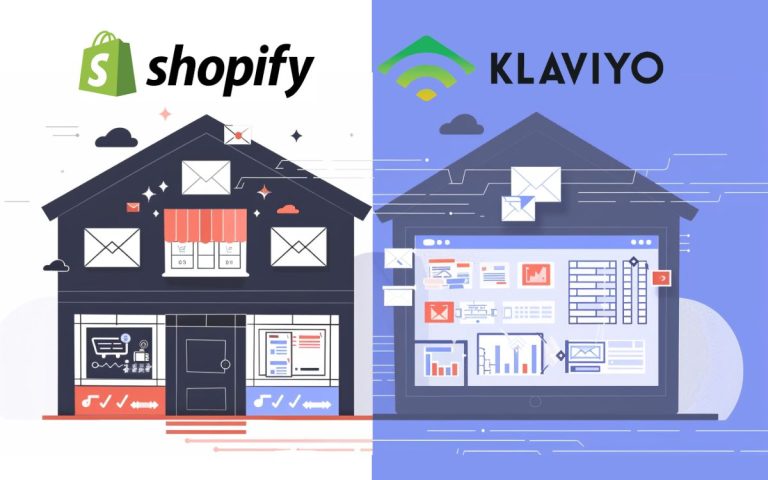Email Marketing Vs Social Media: Which Delivers Better ROI?
Email marketing delivers a stellar ROI of $36 for every $1 spent, outperforming social media‘s $2.80. With 99% of email users checking their inbox daily, you’ll see stronger engagement and higher open rates (15-25%).
Personalized emails can boost open rates by 26% and drive an 8% conversion rate, far exceeding social media’s 3%. Social media, however, reaches 4.95 billion users globally and influences 76% of buying decisions. Combining both channels can amplify your marketing efforts, balancing email’s precision with social media’s extensive reach. Exploring these strategies further can help you master the art of integrated marketing.
Key Takeaways
- Email marketing delivers a higher ROI of $36 per $1 spent compared to social media’s $2.80 per $1.
- Email marketing achieves higher open rates (15-25%) vs. Facebook’s 0.15% and better conversion rates (8%) vs. social media’s 3%.
- Email marketing reaches over 4.2 billion users, while Facebook has 2.96 billion, but social media requires paid promotions for broader reach.
- Personalized emails can increase revenue by 760% and engagement, with 90% of consumers finding personalized email content appealing.
- Integrating email marketing with social media maximizes reach and engagement, creating a cohesive and effective marketing strategy.
ROI Comparison
When comparing ROI, email marketing far outshines social media, delivering $36 for every $1 spent versus social media’s $2.80 per $1. This stark contrast highlights email marketing’s efficiency in driving sales and maximizing your marketing budget.
The average email open rate consistently surpasses engagement rates seen on social platforms, indicating stronger customer engagement.
Consider the conversion rate in the Email Marketing vs Social Media debate. Email marketing not only attracts more clicks but also boasts a higher conversion rate. This means more of your audience is taking the desired actions, whether it’s making a purchase or signing up for a webinar.
The numbers don’t lie; with a 3600% ROI, email campaigns are clearly a more strategic investment.
Allocating your marketing budget on social media mightn’t yield the same returns. While social media is excellent for brand awareness and community building, it doesn’t drive sales as effectively as email marketing.
If you’re focused on higher conversion and tangible revenue, prioritizing email over social could be the game-changer your business needs.
In the end, when choosing between Email Marketing or Social, the data strongly supports email as the superior choice for ROI.
Audience Reach
Considering ROI, it’s vital to also assess audience reach, given email boasts over 4.2 billion active users compared to Facebook’s 2.96 billion monthly active users in 2022. Email marketing allows you to connect with a significant portion of your target audience directly in their inbox. With 99% of email users checking their inbox daily, you’re likely to have consistent engagement with your audience.
On the other hand, social media reaches a broad spectrum with 4.95 billion active social media users globally. However, organic reach on platforms like Facebook is declining, making it harder to connect with your audience without paid promotions. Despite the vast number of social media users, the challenge lies in cutting through the noise and ensuring your message reaches the intended customer.
Email remains a strong channel for reaching audiences, especially when you consider that over 55% of Americans check their email first thing in the morning. This behavior offers a strategic advantage as you can engage with your audience during peak times.
In contrast, social media’s fluctuating algorithms can limit your organic reach, making it less reliable for consistent audience engagement. Therefore, understanding these dynamics is pivotal for maximizing your marketing efforts.
Engagement Rates
When you compare engagement rates, email marketing shines with open rates between 15-25%, higher than Facebook’s 0.15%.
However, TikTok stands out among social media platforms with an impressive 4.25% engagement rate.
Understanding these metrics helps you strategically tailor your content to maximize user interaction and response.
Open and Click Rates
Understanding open and click rates is essential for evaluating the effectiveness of your email and social media marketing campaigns. When you look at email marketing, you’ll find an average open rate of 15-25% and a click-through rate around 2.9%. This indicates that email campaigns, especially those featuring personalized emails and targeted content, can notably enhance your engagement rates.
In contrast, social media platforms like Facebook and Instagram have lower engagement rates, with Facebook at 0.15% and Instagram at 0.60%. This highlights the need for strategic use of these platforms to maximize your reach and interaction.
Consider these key points:
- Open Rate: Email marketing boasts higher open rates, making it a more reliable channel for initial engagement.
- Click-Through Rate: Emails outperform social media in click-through rates, driving more traffic to your site.
- Engagement Rates: Personalized emails lead to higher engagement, proving the power of targeted content.
- Conversion Rate: Email campaigns achieve a conversion rate of approximately 8%, showcasing their effectiveness in driving actions.
User Interaction Metrics
As you evaluate your marketing efforts, it’s essential to examine user interaction metrics to understand how different platforms foster engagement. TikTok leads the pack with an impressive engagement rate of 4.25%, highlighting its strong user interaction levels. This platform’s popularity can be attributed to its algorithm, which effectively surfaces content that resonates with users, driving higher engagement rates.
In contrast, Facebook’s engagement rate stands at a mere 0.15%, signaling a potential decline in user interaction on the platform. This declining engagement might be due to changes in the algorithm that prioritize paid promotions over organic reach.
Instagram, with a 0.60% engagement rate, offers a balanced approach, making it a valuable platform for brand engagement without overly relying on paid promotions.
LinkedIn’s algorithm changes have shifted focus towards knowledge-sharing posts, impacting user interaction metrics. While this has fostered meaningful engagement in niche areas, it underscores the importance of monitoring user interaction levels to adapt your strategy.
Content Engagement Patterns
Examining content engagement patterns reveals TikTok’s dominance with a 4.25% engagement rate, surpassing other platforms by a wide margin. For social media users, TikTok’s high platform engagement is a noteworthy advantage, especially when compared to Facebook’s meager 0.15% and Instagram’s 0.60% engagement rates.
The organic reach on these platforms is dwindling, necessitating paid promotions to maintain visibility.
Consider these engagement rates:
- TikTok: 4.25%
- Instagram: 0.60%
- Facebook: 0.15%
- LinkedIn: Prioritizes knowledge-sharing posts after algorithm changes
As a marketer, these metrics highlight the importance of choosing the right platform for your content. TikTok offers unparalleled content engagement, while LinkedIn’s focus on knowledge-sharing can drive meaningful interactions if leveraged correctly.
Comparatively, email subscribers often deliver a higher average click-through rate than social media, emphasizing the need for a balanced strategy. While social media algorithms continuously evolve, making organic reach harder to achieve, email marketing provides a more stable environment for consistent engagement.
Being strategic about where and how you engage with your audience can profoundly impact your overall campaign success. Balancing social media efforts with email marketing can help maximize both reach and engagement.
Content Types
Leveraging distinct content types, email marketing and social media each offer unique advantages to engage your audience effectively. When you use email marketing, you primarily focus on text-based and image-based content. This includes newsletters, promotions, and announcements. These content types allow for detailed, personalized messages that cater directly to your subscribers. Emails offer a more controlled environment for sharing in-depth information, making them ideal for detailed product descriptions or company updates.
On the other hand, social media excels in delivering diverse content types such as videos, images, stories, and live broadcasts. Platforms like Instagram and TikTok are particularly strong in visual appeal, engaging users through vibrant images and compelling videos. Social media content is interactive and public, encouraging real-time engagement and fostering a sense of community among your audience.
A strategic approach combines the strengths of both platforms. Use the detailed, personalized nature of email marketing to build deeper relationships with your audience. Simultaneously, leverage the visual and interactive elements of social media to attract and engage a broader audience.
Personalization
Personalizing your email marketing can greatly boost engagement, with personalized emails achieving an open rate of 18.8% compared to 13.1% for non-personalized ones. This difference underscores the power of targeted personalization in your email communications. When you focus on delivering personalized content, you foster better customer engagement and loyalty.
Consider these compelling statistics:
- 74% of marketers believe that targeted personalization increases customer engagement rates.
- Over 90% of consumers find personalized content appealing in their email communications.
- Personalized subject lines can increase email open rates by 26%.
- Personalizing email campaigns can lead to a 760% increase in revenue.
Sales Impact
Email marketing and social media both play pivotal roles in driving sales, with email marketing providing a remarkable ROI of $36 for every $1 spent. This stark contrast to social media’s ROI of $2.80 per dollar highlights the superior sales impact of email marketing.
When it comes to conversion rates, 67% of consumers are more likely to make a purchase from emails that include coupons, making targeted promotions through email highly effective.
However, social media shouldn’t be underestimated. Social media posts influence 76% of customers to buy products they’ve seen on the platform. This makes social media a powerful tool for brand awareness and to reach new audiences.
By integrating your email marketing campaigns with social media efforts, you can maximize impact and leverage the strengths of both channels.
Strategically, using emails for targeted promotions can drive conversions and sales, while social media can build brand awareness and engage customers. The synergy of both methods can create a significant increase in your sales impact.
In the debate of Email Marketing vs Social Media, utilizing both in a complementary manner is key to achieving the best results for your business.
Metrics to Track
When comparing email marketing and social media, you should focus on key metrics like open rates, engagement metrics, and conversion rates.
Email marketing typically achieves open rates of 15-25% and conversion rates of 8%, outperforming social media’s 2-4% open rates and 3% conversion rates.
Tracking these metrics helps you understand which platform delivers higher engagement and ROI for your efforts.
Email Open Rates
To gauge the effectiveness of your email marketing efforts, tracking open rates—which typically range from 15-25%—is essential for evaluating engagement and optimizing future campaigns. A high open rate, around 20%, indicates strong engagement and suggests that your emails are resonating with your audience.
By focusing on the following key aspects, you can enhance your email open rates:
- Personalized Emails: Tailoring your messages to individual recipients boosts engagement. Use their names and relevant details to make emails feel more personal.
- Compelling Subject Lines: Crafting intriguing and concise subject lines can considerably impact your open rates. Test different variations to see what resonates best with your audience.
- Timing: Timing is critical. Track the days and times your audience is most likely to open emails, then schedule your campaigns accordingly for maximum impact.
- Content Relevance: Ensure the content you’re sending is pertinent to your recipients. The more aligned the content is with their interests, the more likely they’re to open and engage with your emails.
Consistent tracking and optimization of these elements will lead to improved engagement and higher conversions, ultimately maximizing the effectiveness of your email marketing strategy.
Social Engagement Metrics
Shifting focus to social involvement metrics and understanding the specific metrics to track on platforms like TikTok, Facebook, and Instagram is key to optimizing your social media strategy. TikTok leads the pack with an impressive involvement rate of 4.25%, making it a prime platform for boosting social media engagement. On the other hand, Facebook’s involvement rate is 0.15%, and Instagram’s stands at 0.60%, indicating varying levels of interaction.
Tracking involvement rates across these social media platforms helps you gauge the effectiveness of your content. Organic reach is another critical metric, though it’s declining, emphasizing the need for paid promotions to sustain visibility. For example, LinkedIn’s algorithm favors knowledge-sharing posts, which can impact your involvement metrics significantly.
In addition to involvement rate and organic reach, consider the types of posts that resonate with your audience. While TikTok thrives on short, engaging videos, Facebook and Instagram might require more strategic use of images and stories. Understanding these nuances allows you to adapt your approach for maximum impact.
Conversion Rate Comparison
Comparing conversion rates between email marketing and social media strategies highlights the effectiveness of each channel in turning leads into customers.
Email Marketing vs. social media marketing offers a clear winner when it comes to conversion rates. Email campaigns boast an impressive 8% conversion rate, notably higher than social media’s average of 3%. This higher conversion rate can be attributed to the personalized and targeted nature of emails.
By monitoring conversion rates, you can better understand the effectiveness of your marketing strategies. Here’s a breakdown to visualize the comparison:
- Email Marketing: With a conversion rate of around 8%, email marketing excels due to its direct, personalized approach.
- Social Media Marketing: Social media strategies have a broader reach but only achieve an average conversion rate of 3%.
- Personalization: Email campaigns allow for highly targeted messages, contributing to higher conversion rates.
- Effectiveness Monitoring: Regularly tracking conversion rates helps you optimize both email and social media strategies.
Integrated Strategy
An integrated strategy maximizes your brand’s reach and engagement by blending the strengths of email marketing and social media. Email marketing uses personalization to target individual customers, while social media provides broad reach and high engagement rates. Combining email and social media in your marketing efforts allows you to create a cohesive brand message that resonates across multiple channels.
An integrated strategy leverages social media usage to amplify your email campaigns. For example, sharing email-exclusive content on social platforms can drive more sign-ups and enhance your email list. Conversely, promoting your social media channels through email can increase follower counts and engagement. This synergy boosts your Marketing ROI vs. relying solely on one channel.
Furthermore, email marketing and social media together enable a holistic approach to customer communication and relationship building. You can tailor messages to individual preferences via email while maintaining brand visibility and community engagement on social media. This dual approach not only fosters customer loyalty but also guarantees your brand remains top-of-mind.
Incorporating both email and social media into a single strategy ultimately enhances your marketing efforts, providing a balanced and effective way of building brand loyalty and visibility.
Frequently Asked Questions
Is Email Marketing Better Than Social Media?
You’ll find that email marketing delivers a higher ROI, reaching more users with better engagement. With over 4.2 billion active users and precise targeting, it outperforms social media, offering better security and ownership of your contact lists.
Is Email Marketing Part of Social Media Marketing?
No, email marketing isn’t part of social media marketing. Email marketing focuses on direct communication with subscribers through personalized emails, while social media marketing engages audiences through content on platforms like Facebook, Instagram, and Twitter.
What Is the Difference Between Email and Social Media?
You’ll find email marketing is a personalized, direct channel with higher open rates and ROI. Social media, on the other hand, offers diverse, visually engaging content with broader reach but lower engagement rates. Combine both for best results.
Is Email Marketing Outdated?
With an ROI of $36 for every $1 spent, email marketing isn’t outdated. It has over 4.2 billion users globally. With personalized, targeted campaigns, you can reach engaged audiences daily and drive sales and brand loyalty.
Setting Your Goals: Email Marketing vs. Social Media
When you weigh email marketing against social media, consider your goals. Email marketing often delivers higher ROI, personalized content, and stronger sales impact, while social media excels in audience reach and engagement.
Imagine having a toolbox—each tool serves a purpose. Use data to track metrics like open rates and click-through rates for emails, and likes and shares for social.
Combining both strategies can maximize your marketing efforts and drive thorough results. Make informed, strategic choices for the best outcomes.







